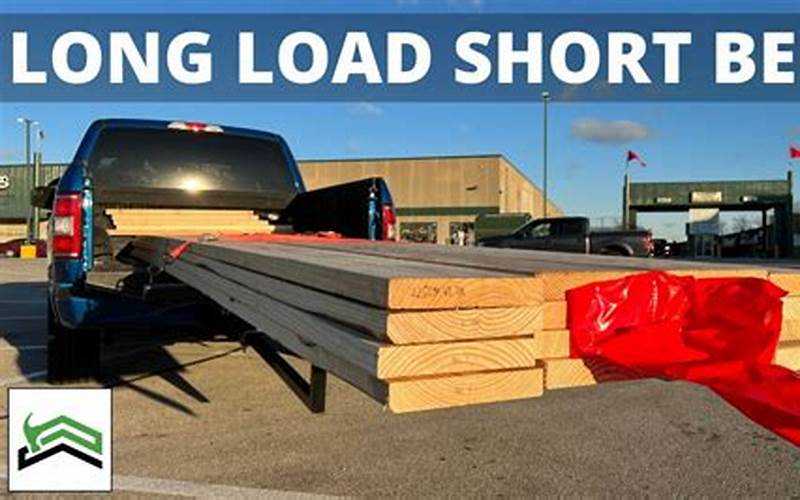 Source: bing.com
Source: bing.comIntroduction
Hello, Truck Owner! Are you wondering how to safely and efficiently haul 16 ft boards in your truck? Look no further. In this article, we will provide you with a comprehensive guide on how to tackle this task with ease. Whether you’re a seasoned truck owner or a beginner, our step-by-step instructions and tips will ensure a successful hauling experience. So, let’s dive in and learn how to transport those long boards securely.
Strengths and Weaknesses of Hauling 16 ft Boards in a Truck
When it comes to hauling long boards in a truck, there are both strengths and weaknesses to consider. Let’s explore them in detail:
Strengths:
1. Versatility: Trucks offer the flexibility to transport various materials, including 16 ft boards, due to their spacious cargo beds.
2. Accessibility: With a truck, you can access remote locations and job sites that might be challenging to reach with other vehicles.
3. Stability: Trucks are generally more stable and can handle heavier loads, ensuring a safer hauling experience for your 16 ft boards.
4. Customization Options: You can customize your truck bed with racks, tie-downs, or other accessories to secure the boards effectively.
5. Cost-Effective: Owning a truck eliminates the need for renting or borrowing a vehicle every time you need to transport long boards.
6. Resale Value: A well-maintained truck holds its value over time, allowing you to recover a significant portion of your investment if you decide to sell it.
7. Protection: By properly securing the 16 ft boards in your truck, you can prevent damage during transportation, saving you money on replacements.
Weaknesses:
1. Size Limitations: Depending on your truck’s size, you may face limitations in terms of the length and quantity of boards you can haul.
2. Weather Dependency: Inclement weather conditions like rain, snow, or strong winds can make hauling 16 ft boards more challenging and potentially dangerous.
3. Fuel Consumption: Carrying heavy boards in your truck can increase fuel consumption, impacting your overall mileage and expenses.
4. Maneuverability: Trucks, especially larger ones, may be less maneuverable in tight spaces or congested areas, requiring careful navigation.
5. Maintenance: Trucks typically require regular maintenance to ensure optimal performance, including tire rotations, oil changes, and brake inspections.
6. Initial Cost: Purchasing a truck involves a significant upfront investment, which may not be feasible for everyone.
7. Parking Challenges: Finding appropriate parking spaces for your truck, especially in urban areas, can be a challenge and may require additional planning.
Table: Complete Information on How to Haul 16 ft Boards in a Truck
| Step | Description |
|---|---|
| 1 | Measure your truck bed and the length of the boards to ensure compatibility. |
| 2 | Clear any debris or loose objects from the truck bed to create a clean hauling space. |
| 3 | Use protective coverings or padding to prevent scratches or damage to the boards during transportation. |
| 4 | Securely tie down the boards using ratchet straps, bungee cords, or rope, ensuring they are tightly held in place. |
| 5 | Distribute the weight evenly across the truck bed to maintain stability and prevent any imbalance. |
| 6 | Double-check the security of the boards and straps before hitting the road to minimize the risk of shifting during transit. |
| 7 | Drive cautiously, avoiding sudden stops, sharp turns, and rough terrain that could potentially dislodge or damage the boards. |
Frequently Asked Questions
1. Can I haul 16 ft boards in any type of truck?
Yes, as long as your truck bed can accommodate the length and weight of the boards, you can haul them safely.
2. What can I use to secure the boards in my truck?
You can use ratchet straps, bungee cords, or rope to securely tie down the boards and prevent them from shifting during transportation.
3. Are there any legal restrictions for hauling long boards in a truck?
Regulations regarding hauling long boards may vary depending on your location. It’s essential to familiarize yourself with local laws and obtain any necessary permits if required.
4. Should I cover the boards during transportation?
Covering the boards with protective materials, such as tarps or blankets, can prevent scratches and damage caused by road debris or weather conditions.
5. How can I ensure the weight distribution is balanced?
By placing the boards evenly across the truck bed and securing them tightly, you can maintain a balanced weight distribution and enhance stability during transit.
6. What precautions should I take while driving with 16 ft boards?
Drive cautiously, maintain a safe following distance, and avoid sudden maneuvers to minimize the risk of accidents or damage to the boards.
7. Can I haul boards longer than 16 ft in my truck?
It depends on the dimensions of your truck bed. Ensure there is ample space to accommodate longer boards without compromising safety or legality.
Conclusion
Now that you have learned the ins and outs of hauling 16 ft boards in a truck, you can confidently take on this task. Remember to prioritize safety by securing the boards properly and following local regulations. By implementing our tips and guidelines, you’ll ensure a smooth and successful transportation experience. So, go ahead and utilize your truck’s versatility to conveniently haul those lengthy boards to your desired destination.
Keep in mind that regular maintenance and care for your truck are vital to prolong its lifespan and optimize performance. Always consult your vehicle’s manual for specific recommendations and reach out to professionals if needed.
Happy hauling!
Disclaimer: The information provided in this article is for educational purposes only. The author and publisher are not responsible for any damages or injuries that may occur as a result of following these instructions. Please exercise caution and prioritize safety when hauling 16 ft boards in a truck.
 MyVans Your Vehicle Solution
MyVans Your Vehicle Solution